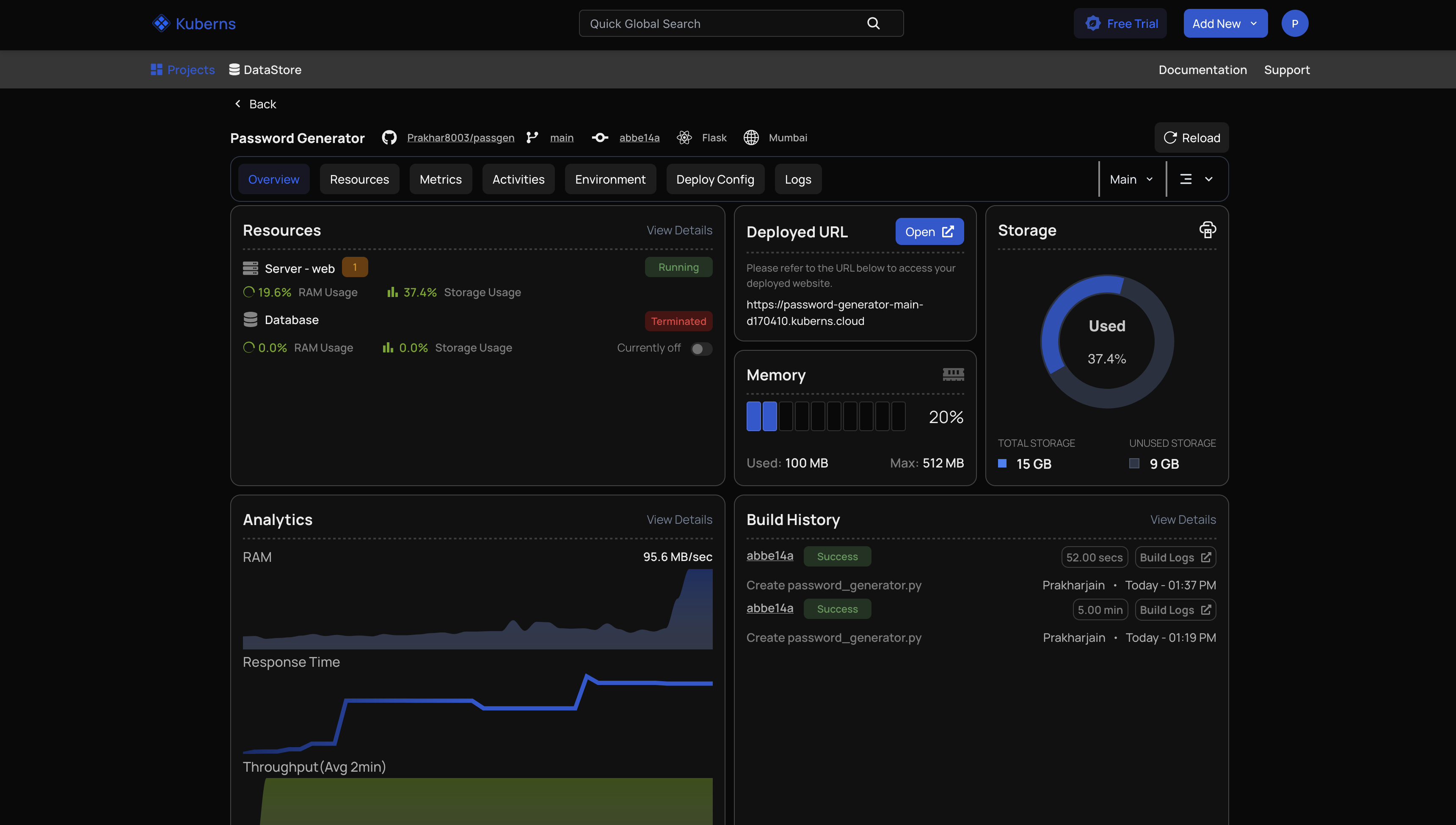Services
Services are the main building blocks of modern applications, each service is responsible for a specific functionality. They can range from backend servers and APIs to databases and frontend applications. By segmenting an application into distinct services, it becomes easier to manage, develop, and scale. This modularity enhances the efficiency and flexibility of the development process
Kuberns leverages AI-powered automation to handle everything from environment setup to CI/CD for these services, requiring no YAML or Docker knowledge.
How do Projects and Services work together?
In Kuberns, a Project acts as a logical container, providing a holistic view of the application's components. Each project encapsulates one or more Services, such as APIs, frontends, workers, or background tasks, giving you a complete view of your application architecture.
By isolating Services within a Project, you can:
- Organize your deployments cleanly across teams or environments.
- Apply consistent environment variables, access controls, and deployment profiles.
- Manage dependencies between frontend/backend services and database layers effectively.
AI-Driven Application Deployment with Kuberns
Kuberns redefines the deployment experience by replacing manual steps and boilerplate scripts with AI-powered automation.
Our Goal: Get your code live in minutes, without touching ports, Dockerfiles, or CI/CD YAMLs.
Zero Manual Setup
Kuberns auto-detects your application's framework, assigns ports, and generates startup commands. No need to configure:
- Reverse proxies
- Web servers
- Dockerfile and Configs
Profiles for Multi-Service Orchestration
For teams deploying multiple interconnected services, Kuberns introduces Profiles:
- Group multiple services under a single deployable unit
- Manage shared environment variables and deployment triggers
- Ideal for syncing frontend-backend-database deployments
No CI/CD Burden
No pipelines to define, no YAML files or scripts to maintain. Kuberns automates:
- GitHub branch monitoring
- Deployment build steps
- Rollbacks and logs
- Post-deploy hooks and environment variable injection
Adding a new service
Connecting and Configuring GitHub
To fully utilize Kuberns, you need to connect your GitHub account for seamless integration with your version control system.
When you select a service, you will be redirected to the "Creating a Service" page where you can configure the version control source.
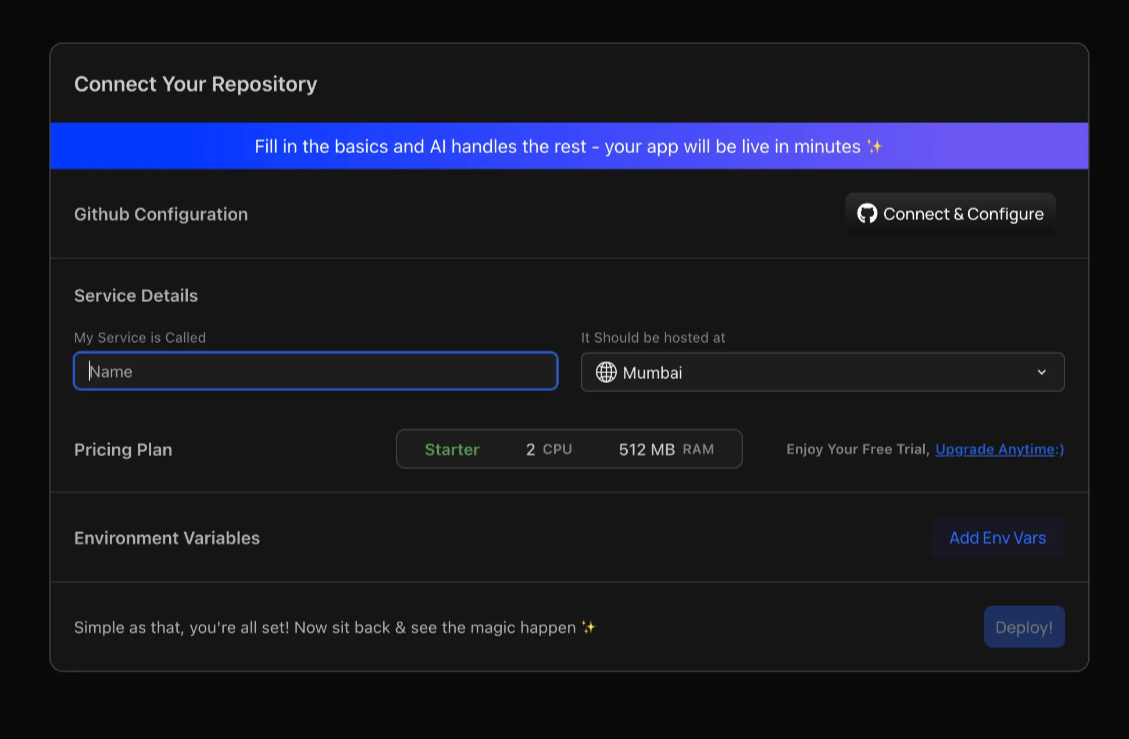
If this is your first time using Kuberns, you will need to authenticate GitHub to allow access to your repositories. This process ensures that Kuberns can securely access your codebase for deployment.
Authentication Process
Upon choosing to connect to GitHub, you will be redirected to GitHub’s authorization page.
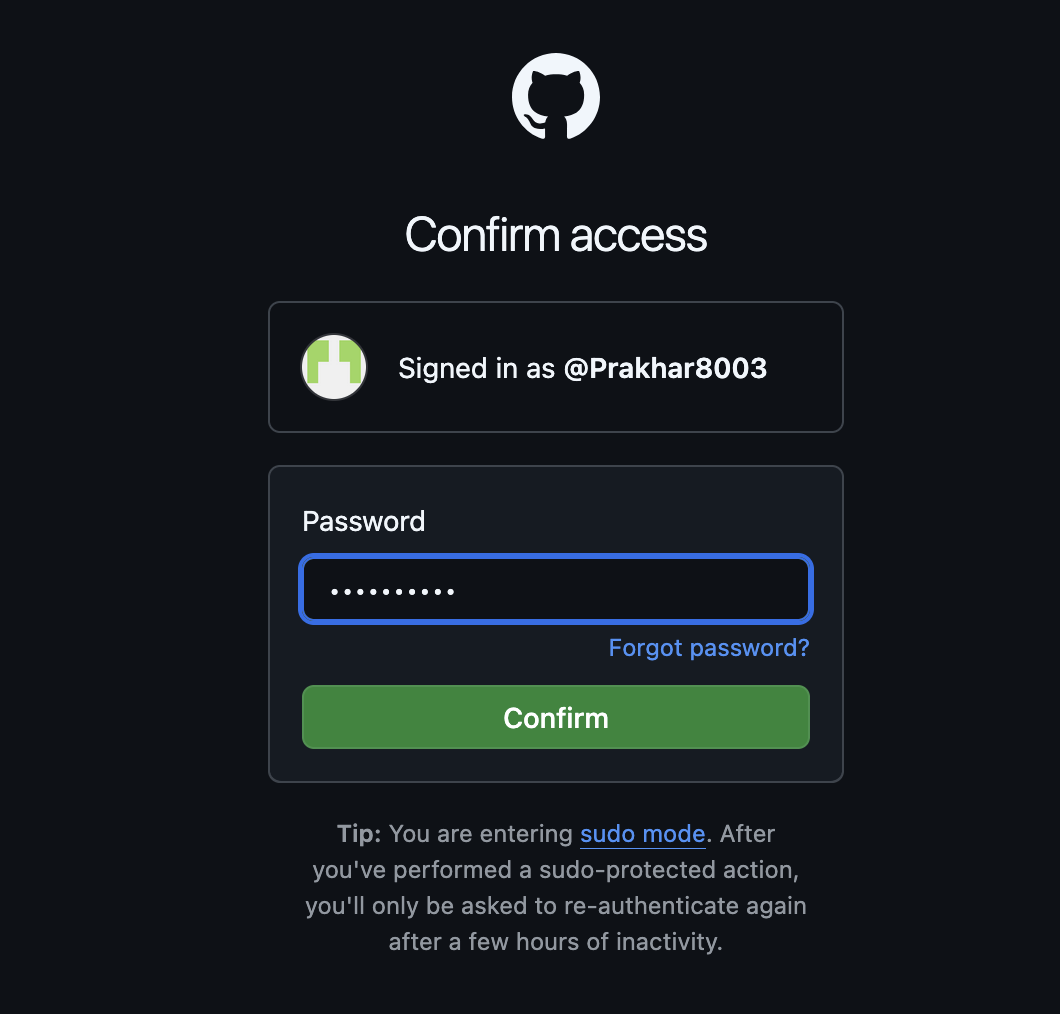
Once Confirming Access, you authorize Kuberns to access your repositories.
This step is crucial for ensuring that Kuberns can pull the necessary code from your GitHub account. Rest assured, your data is handled with the utmost security, and Kuberns follows stringent protocols to protect your information.
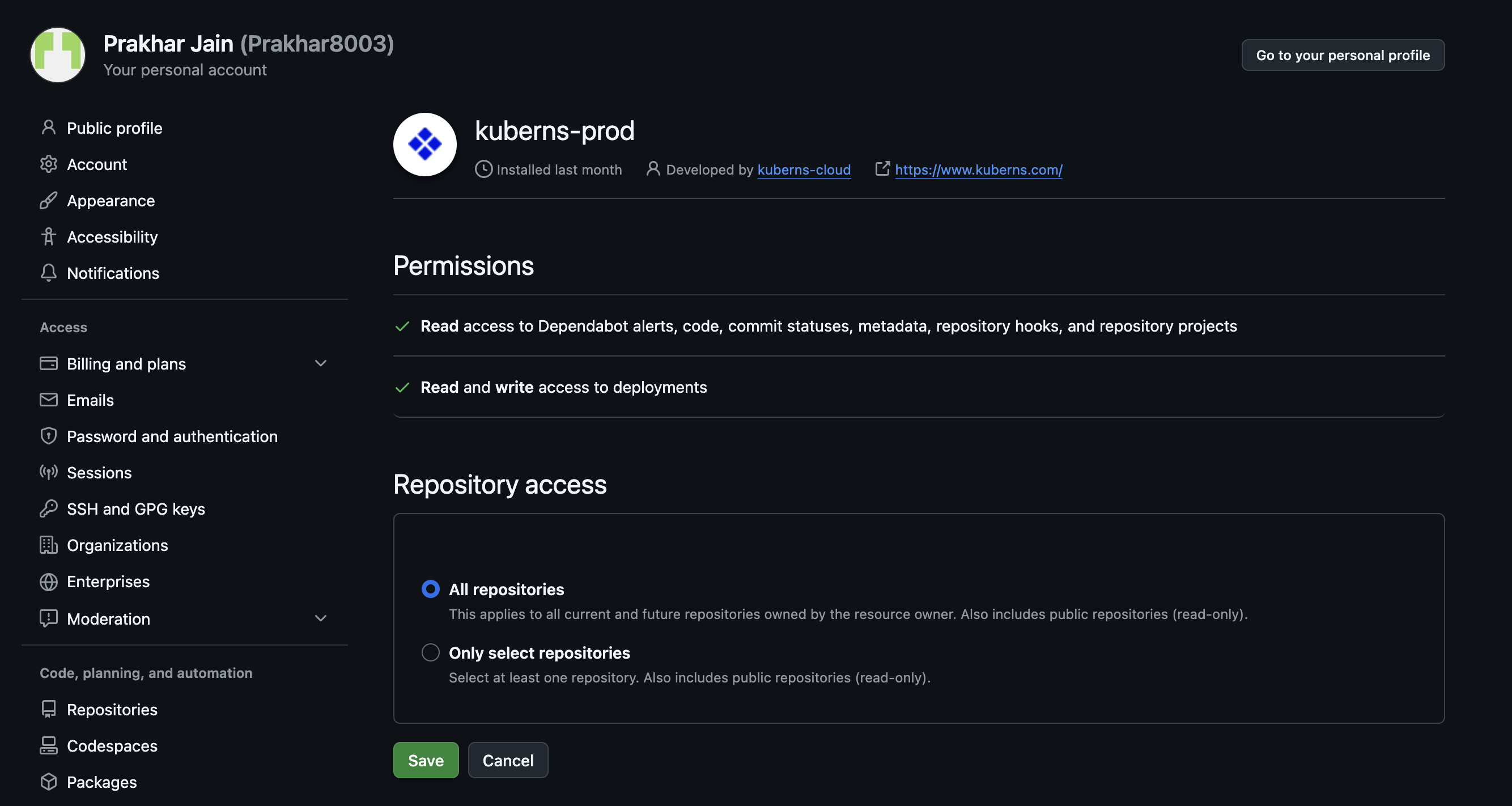
- Once your GitHub is connected, Select the Repository and Branch of your Service.
- Fill in the basics and let AI handle the rest
- Name your service.
- Choose your hosting Region
- Pick your Pricing Plan.
- No need of Selecting Template, Filling Forms, Choosing Database, AI will handle everything
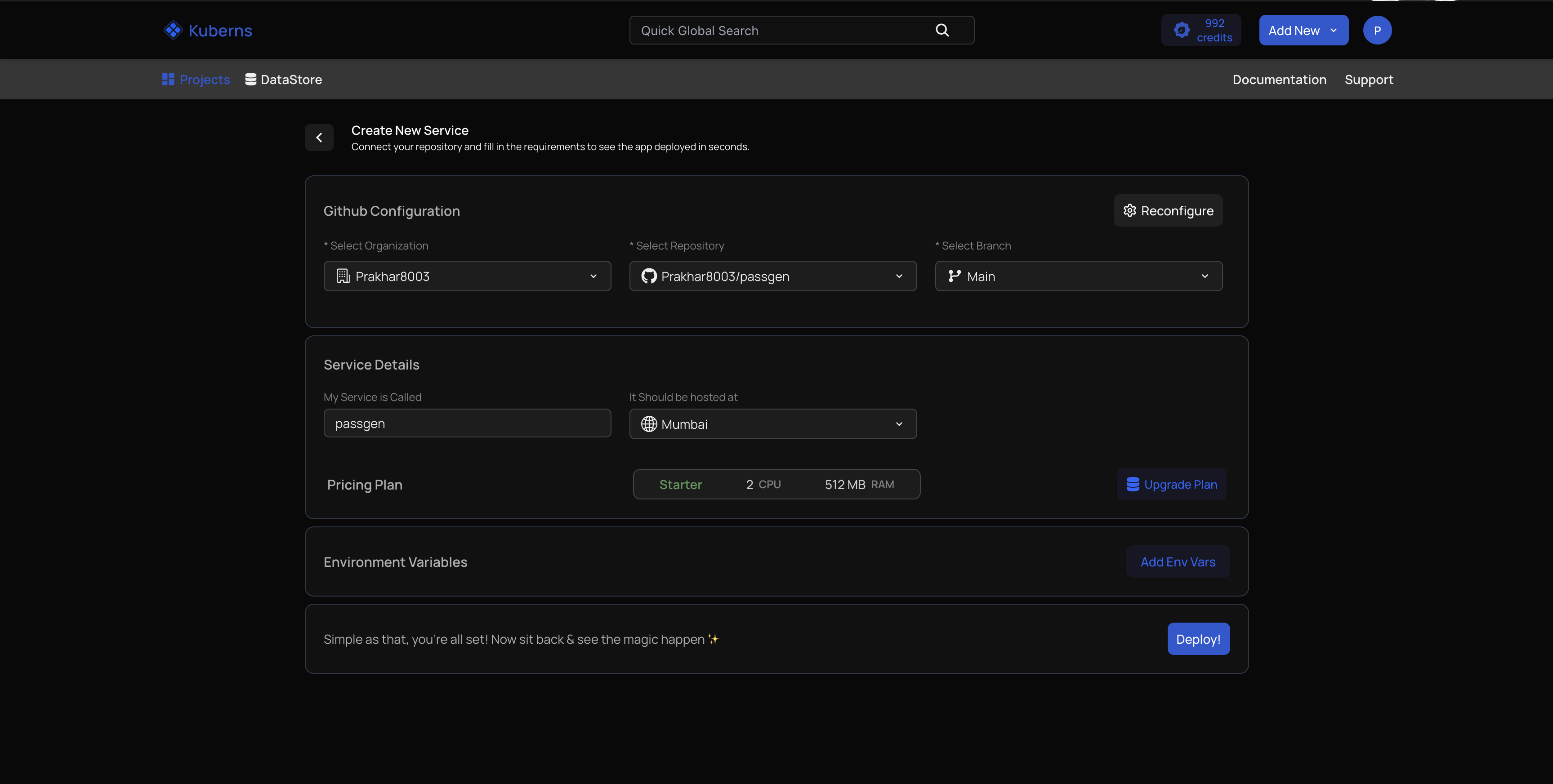
-
Set Up Environment Variables
You can either:
- Type key-value pairs manually, or
- Click Upload .env file to import everything in one go.
- Click Save & Close once you’re done.
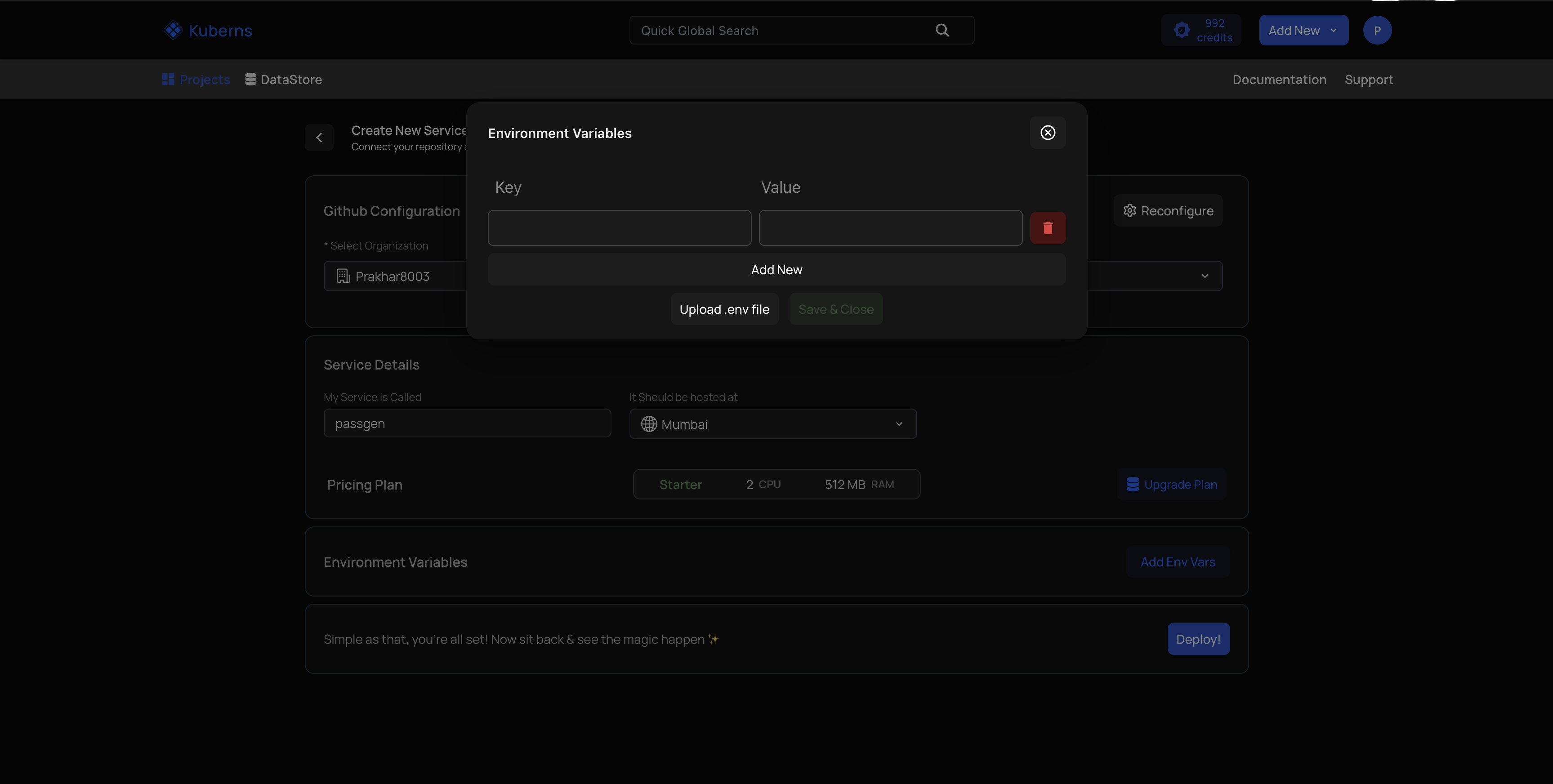
Let AI Take Over Deployment
Click Deploy, and let Kuberns AI handle the rest for your service.
- Watch real-time logs as your app is set up.
- Within a few minutes, your app is deployed
- “Sit back & relax, Kuberns AI is taking care of everything.”
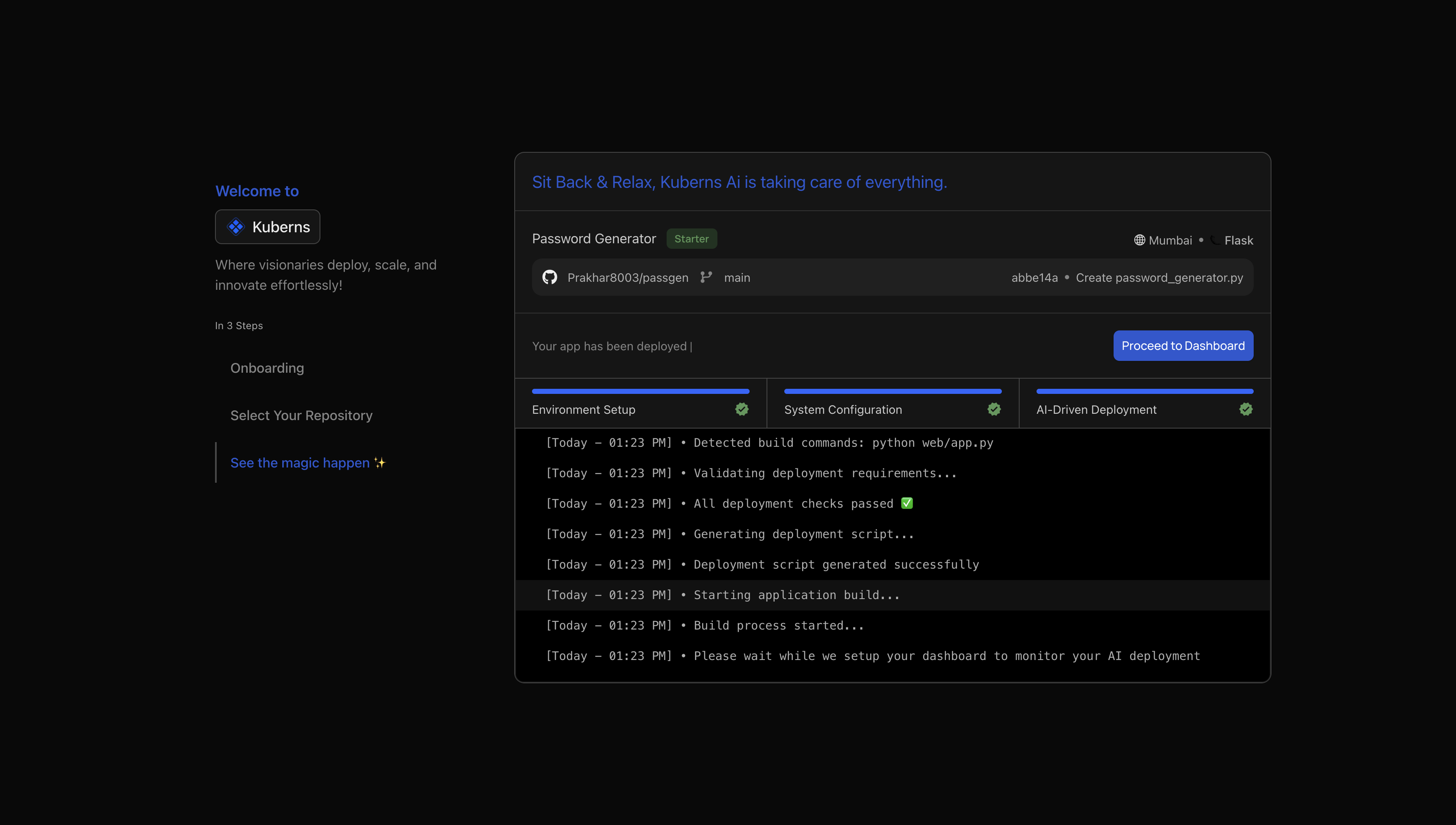
Manage everything for your Service from the AI Dashboard
Welcome to your Kuberns Dashboard!
